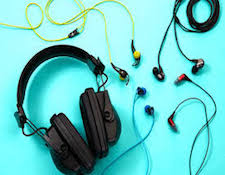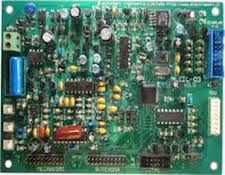It’s the time of year for saving money!
Imagine if you will an audiophile. Your image should be of a kindly gentleman with a graying, receding hairline, wearing reading glasses and sitting in his listening room in a well-worn leather chair. The chair is perfectly positioned to his floor standing speakers. Across from his chair is a vintage turntable with a wooden base that is lit by the soft glow of a tubed amp, preamp and phono stage. Neatly stacked shelves of LP’s adorn the room and classical is the only musical constant. Call him the “purist.”
 Now imagine an audiophile with separate solid state equipment, music server and DAC, gleaming metal and acrylic turntable, an ultra modern equipment rack, headphones and every genre of music available, which when played, blares from the ultra modern speakers. He has CD’s and LP’s in shelves, boxes and scattered all over the floor. Call him the “modernist.”
Now imagine an audiophile with separate solid state equipment, music server and DAC, gleaming metal and acrylic turntable, an ultra modern equipment rack, headphones and every genre of music available, which when played, blares from the ultra modern speakers. He has CD’s and LP’s in shelves, boxes and scattered all over the floor. Call him the “modernist.”
Finally, consider a young hipster happily bobbing down the street with wireless headphones, an MP3 player, lossy, decidedly inferior compressed music, and just as happy as can be. He loves music but is unconcerned or perhaps unaware of the sonics that high performance audio can provide. Call this one the “newbie.”
Despite the obvious stereotyped analogies, try to develop a metal picture of these three different music lovers.
It doesn’t require a supreme amount of investigative effort to realize that a sizeable focus in high-end audio today is directed towards the “newbie.” When we look more closely at the three stereotypes above, the “purist” is the audiophile with years of audio experience. In all probability, they are satisfied with their system and any changes will be essentially minor ones.
 The modernist certainly has future potential for new equipment. This one hasn’t yet reached a level of contentment that obviates new purchases, but might well be heading in that direction. This type of listener should be expected to replace a component here and there but only selectively.
The modernist certainly has future potential for new equipment. This one hasn’t yet reached a level of contentment that obviates new purchases, but might well be heading in that direction. This type of listener should be expected to replace a component here and there but only selectively.
Now consider the newbie. This type of listener has almost literally a lifetime of predictable changes in their listening habits and subsequent potential purchase of new equipment. First, however, this one needs to take that initial step towards something better than Mp3 served over inexpensive headphones. Once done, a potential audiophile awaits.
If you were a manufacturer of high-end audio components, to whom would you devote at least some, if not most the preponderance of your design and manufacturing efforts? When we look more closely at the proliferation of available new products, the youth market is clearly and obviously a logical target market. With good reason, if the stereotyped examples listed above are in any way correct, and obviously they may not apply to all audiophiles but play along, then the newbie represents growth. And unless I missed class that day, growth is the one key ingredient any manufacturer needs to survive, remain a thriving entity and expand their customer base. New business and market penetration is the literal lifeblood for any business, regardless of the product manufactured.
Streaming has been something that non-audiophile young folks have been doing for years. Companies such as Pandora and Spotify have been steadily adding customers each year since their inception. We now have audiophile streaming options and future choices certain to come. Is it therefore surprising that many newly designed high-end products offered today incorporate some type of streaming option?
If you further consider that so many new audiophile products are small and sold at vastly lower costs compared to typical components in a system enjoyed by a “purist,” for instance, then it becomes obvious where at least part of the marketing effort is being directed.
 Looking even more closely, some of the companies whose names are the very foundation of high-end audio, founded by a visionary inventor, and staffed with a few cherished employees, are now owned by multi national conglomerates with worldwide sales and marketing efforts. These companies, what ever may be thought of them, suffer no fools and the one thing they know how to do is sustain growth. It shouldn’t be all so surprising then, that a directed effort of the conglomerates R&D work is aimed at converting the youth, who up to now have been unconcerned with better sonics, into listeners that are. Care to guess how to effect this change? Such change comes by offering products they want to buy – like smaller, multi function, more affordable products.
Looking even more closely, some of the companies whose names are the very foundation of high-end audio, founded by a visionary inventor, and staffed with a few cherished employees, are now owned by multi national conglomerates with worldwide sales and marketing efforts. These companies, what ever may be thought of them, suffer no fools and the one thing they know how to do is sustain growth. It shouldn’t be all so surprising then, that a directed effort of the conglomerates R&D work is aimed at converting the youth, who up to now have been unconcerned with better sonics, into listeners that are. Care to guess how to effect this change? Such change comes by offering products they want to buy – like smaller, multi function, more affordable products.
Considering all of this is it a good thing? You betcha, it absolutely is. Because at the end of the day, “modernists” and “purists” can talk at length about how best to convert the youth of current times into audiophiles. We can talk improved sonics, a more musical experience; we can talk about whatever we would like to entice young people. But if we really want to show a fifteen-year-old, ear bud wearing, Mp3 listening kid what is really possible, perhaps the best way is to keep it simple.
Give them something they like, something that’s easy to use, something that sounds better than that to which they are accustomed, and something they can afford. Then a recipe for new customers is likely discovered. Which is precisely what looks to be at least part of the current high-end landscape.
Manufacturers will continue to design and build ultra expensive, cost no object, world-class performance equipment. Let’s face it, affluence has its privileges. Recognizing that the future of high end likely rests on the shoulders of new customers, maybe the makers of present day products of our hobby “ain’t so dumb” after all.





